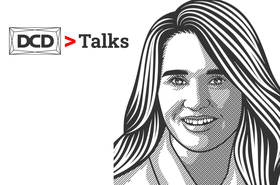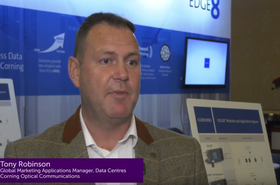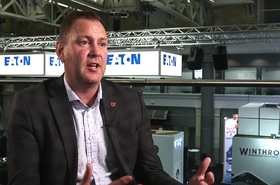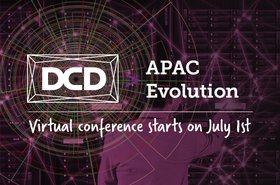It is nothing new to hear that data centers have increased in scale dramatically over the years. In direct correlation to demand, hyperscale facilities have been required globally, and this brings a unique set of challenges.
We sat down with Jeanne Propst, Senior Vice President Global Data Center at Corning Incorporated in our latest DCD>Talk to discuss these challenges, and how Corning aims to provide solutions.
Corning Incorporated has a long and innovative history in technology, from the development of a bulb-shaped glass encasement for Thomas Edison's new incandescent lamp, to creating parts for the Hubble telescope. Jeanne Propst has been around for 30 years of this exciting journey, and as a result, has a clear idea of how the company continues to innovate in the essential data center industry.
“The scale of data centers has changed significantly over the years, and building just the data center campuses has changed. Traditionally, in the past, you would have been talking about a single data center or a single building as a data center. Now with hyperscale, you're talking about building a campus that could have five data center buildings. You're not really talking about a single location anymore, you're talking about multiple buildings into a campus location.
“Hyperscale has really changed the face of the data center market, and they have a lot of different challenges in that scenario, where you've got three to five buildings that you're trying to connect.
“Hyperscale operators are trying to connect volumes and volumes of fiber – it could be 50,000 or 60,000 fibers that they're trying to connect, and when they talk to us, they want to know how to solve the challenges that they're having with deployment.
“Even in a normal situation in a normal market, the challenges you face trying to connect that volume of fibers, are that it takes weeks and weeks to do all the cable prep required, all the splicing to connect that volume of fibers and that many buildings together. So when they're talking to us, they're talking about how they can improve the speed of deployment.”
It can be difficult to conceptualize quite how massive the scale is that Propst is talking about – like trying to explain the universe to an ant. But once you get your head around the complexities, Corning’s solution can come into play.
“As data centers got larger, whether you're on a campus or not, you started to see core switches with hundreds of ports, which makes for 1,000s, and 1,000s of terminations inside a data center. In this campus environment, you could see as many as 50,000 terminations.
“You're not talking about connecting a 288 cable or an 864 cable, you're talking about connecting those buildings with a 3456 cable and, in some instances, larger than that.
“If you go back to the past, all those terminations used to have to be terminated in the field with hand polishing – that's what I did in the factory [in 1991], hand polishing those connectors, prepping that cable, and even splicing. So it was a real challenge for the data centers to connect that volume of fibers in as little as two weeks versus multiple weeks.
“The little secret in a fiber optic system is that it's simple. You are always connecting point A to point B, and the absolute fastest way to connect point A to point B is to use something that's pre-terminated.
“We introduced, in the mid-90s, Plug and Play, and actually it was the first pre-terminated solution for the industry.
“Simply, we took a trunk cable, put on an MTP connector in the factory, and that gave operators the ability to install data center cabling as much as 70 percent faster than the traditional splicing methods. That revolutionized the way the operators thought about deploying the physical layer, and we've been building on that Plug and Play platform since the mid-90s.
“Today's platform, that we call Edge Rapid Connect, is a new pathway to extreme density. It still gives you the same ability, and it can be installed 70 percent faster than your traditional environments.”
Connectivity is a chief concern for data centers, and as demand looks set to continue to rise, so must innovation.
Listen to the DCD>Talk to hear more about how Corning is innovating connectivity.





